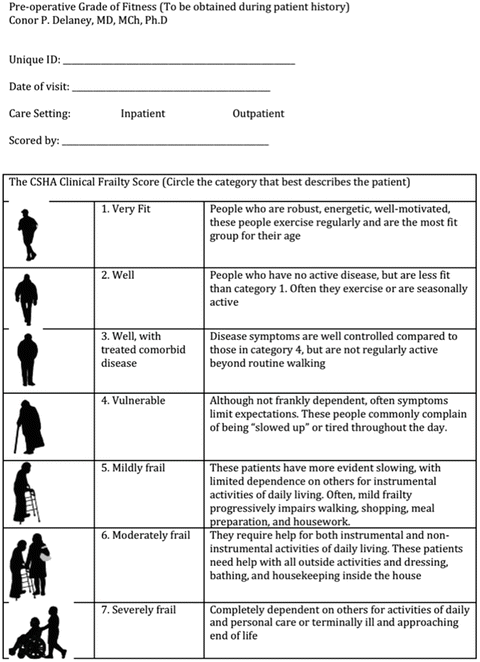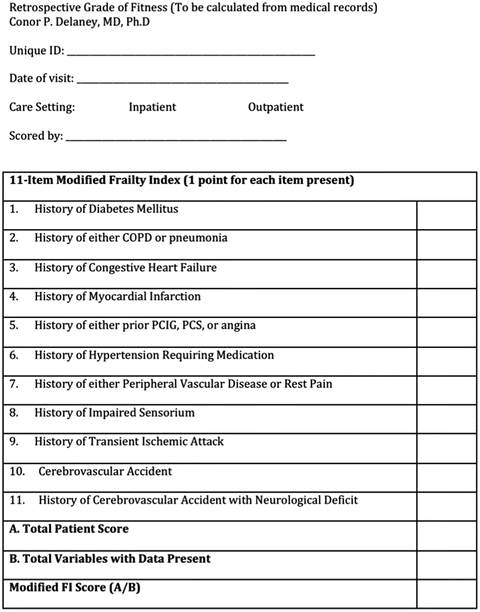(1)
Division of Colorectal Surgery, Department of Surgery, University Hospitals Case Medical Center, Cleveland, OH, USA
(2)
Division of Colorectal Surgery, Department of Surgery, CWRU Center for Skills and Simulation, Digestive Health Institute, University Hospitals Case Medical Center, Case Western Reserve University, Cleveland, OH, USA
Keywords
Enhanced recovery pathway for colorectal surgeryColorectal surgery and enhanced recovery pathwayUniversity Hospitals Case Medical Center and enhanced recovery pathwayPatient education in enhanced recovery pathwayPerioperative protocols in enhanced recovery pathwayUniversity Hospitals Case Medical Center, in Cleveland, Ohio, has been at the forefront of the development of enhanced recovery pathways (ERP) for over a decade. The Division of Colorectal Surgery has helped to carefully develop and investigate many elements that are now standard in ERPs at many institutions around the world. Utilizing a multidisciplinary approach to perioperative care, many patients can now be discharged home safely following colectomy in 24–48 h. The team, consisting of the attending surgeons, nurse practitioners, colorectal fellow, general surgical residents, enterostomal therapy nurses, and registered nurses, coordinate care within the guidelines of a well-established ERP to ensure the safest and most comfortable experience for patients. Through our work on enhanced recovery in the colorectal patient population, we have developed protocols that incorporate these principles to all abdominal surgery specialties including surgical oncology, gynecology oncology, general surgery, hepatobiliary, and urology. In this chapter, we provide an overview of our institute’s ERP for colorectal surgery, beginning in the preoperative period and continuing through discharge and follow-up.
Preoperative Education
A critical aspect of any ERP is thorough patient education. Ensuring that patients are well prepared for the surgery and are aware of the milestones for discharge and recovery allows them to take an active role in the process and increases adherence to the pathway. After a complete preoperative workup, we provide all patients with a comprehensive guide entitled “Your Guide to Abdominal Surgery.” This guide, developed by our nurse practitioners and surgeons, explains all aspects of expected postoperative care and aims to be a reference for patients, their families, and caregivers to utilize before, during, and after their surgery and hospitalization. This guide covers all aspects of our ERP and relates, in layman’s terms, what will occur after surgery so that the patient may anticipate what is to come.
Our guide is broken into several different sections and the table of contents is shown in Fig. 22.1. Preoperative information, such as bowel prep instructions, what to bring to the hospital, and a description of what to expect day to day during their hospital stay is provided. Various aspects of our ERP are described to patients, along with detailed information on topics such as postoperative pain control and how to use the patient controlled anesthesia (PCA), the importance of ambulation and instructions for the incentive spirometer, and details of how the patient may expect their diet to advance and their hospitalization to progress. Finally, information for care at home is included for education and reference. Topics include: prevention and diagnosis of dehydration; ostomy and drain care; ostomy output log; anticipatory information regarding common problems (nausea, pain, poor appetite); and indications to contact the doctor immediately (Fig. 22.2).



Fig. 22.1.
Information packet table of contents. (©2015 University Hospitals Case Medical Center. Used with permission.)

Fig. 22.2.
Indications to call surgeon.
Preoperatively, all patients are seen within approximately 2 weeks by anesthesia for preoperative evaluation, medical optimization if necessary, and baseline labs including type and screen. All patients have an assessment of home support in anticipation of any home care needs that may be required at the time of discharge. To identify patients at risk, we use a Modified Frailty Score (Fig. 22.3) that has been correlated with hospital length of stay and need for additional home support. Patients undergoing operations with anticipated stoma creation are seen by our stoma team for education and planning. The stoma team will again see these patients the morning of surgery in the preoperative holding area for marking of the stoma site.




Fig. 22.3.
Modified Frailty Index. (Adapted from Frailty Index from Farhat et al. J Trauma Acute Care Surg, Volume 72, Number 6, with permission.)
Perioperative Protocols
For all elective surgeries, patients are contacted by the surgeon’s office several days before the scheduled procedure date. Time and date of the operation are confirmed and information on arrival time, parking, and preoperative instructions are provided.
There are several standard protocols that we follow for patients in the days leading up to surgery. We utilize full mechanical bowel prep in the majority of cases, with the exception of right colectomies. The preferred bowel prep for most cases is a polyethylene glycol solution, along with oral neomycin and metronidazole, avoiding solid food the day before surgery. Additional preoperative oral medications include gabapentin 150–300 mg TID for 3 days prior to surgery, which has been shown to decrease postoperative pain. Finally, patients are instructed to drink a nutritional supplement the night before surgery (we use Boost Glucose Control®), though we have not noted any effect of this on bowel prep success.
On the day of surgery, patients are instructed to arrive at least 2 h prior to the schedule start of surgery. They are admitted to the hospital and brought to the preoperative holding area. In addition to standard preparation for the operating room, our patients follow several additional protocols. A final dose of gabapentin is given orally 1–2 h before the scheduled start time. If additional bowel prep is required, a sodium phosphate enema (Fleet®) is administered. All patients without other contraindication receive subcutaneous injection of 5000 units heparin for thromboprophylaxis. Finally, Alvimopan 12 mg is given orally for all planned open colorectal cases and laparoscopic colorectal cases with a perceived high risk for conversion. If laparoscopic cases are not converted, Alvimopan is not given post-operatively.
Intraoperatively, patients receive standard perioperative antibiotics at induction and before incision, and then at appropriate recommended intervals. Steroid dependent patients receive a steroid pulse. We give all patients without renal impairment a single dose of 1000 mg IV acetaminophen intraoperatively, along with ketorolac 15–30 mg IV. If possible, we avoid abdominal drains, nasogastric tubes, and the use of epidurals (except in narcotic dependent laparotomies), as these have not been shown to improve outcomes after laparoscopic surgery and may negatively impact patient recovery. Fluid administration is left to the discretion of the anesthesia team, but we are currently exploring the utility and benefit of goal-directed fluid therapy with the use of noninvasive stroke volume measurement. Finally, abdominal wall nerve block is performed at the conclusion of all cases. We perform this through a transversus abdominus plane (TAP) block using a solution of 0.5 mg/kg 5 % Marcaine injected bilaterally into the TAP midway between the iliac crest and the costal margin at the anterior axillary line, as we have described in several recent publications.
At the conclusion of the case, patients are extubated at the discretion of anesthesia and brought to the recovery room for close monitoring before transfer to the regular nursing floor. Selective admission to the surgical intensive care unit for ongoing respiratory support or close postoperative monitoring is made on a case-by-case basis through discussion between the attending surgeon and attending anesthesiologist.
Postoperative Enhanced Recovery Pathways
Major Open Abdominal Cases
The ERP utilized for open abdominal cases is summarized in Table 22.1. Immediately postoperatively, all patients are placed on a morphine or hydromorphone PCA without basal dose. IV ketorolac is continued from the last intraoperative dose every 6 h around the clock for a total of ten doses. Due to cost impacting availability of IV acetaminophen within our hospital’s formulary, we are using oral acetaminophen, 650–1000 mg every 6 h postoperatively, continued until discharge. Oral gabapentin is continued TID for all patients until the time of discharge. On postoperative day 2 (or as soon as the patient is tolerating clear diet), the PCA is stopped. Oral oxycodone 5 mg every 4 h prn is started, along with ibuprofen 800 mg TID after the final dose of ketorolac. IV narcotics are used on a case-by-case basis for severe breakthrough pain only, and are not routinely ordered as a standing PRN order. Patients are discharged home with prescriptions for oral acetaminophen, ibuprofen and oxycodone prn.
Table 22.1.
Open abdominal surgery ERP.
Postoperative/PACU < div class='tao-gold-member'>
Only gold members can continue reading. Log In or Register to continue
Stay updated, free articles. Join our Telegram channel
Full access? Get Clinical Tree
 Get Clinical Tree app for offline access
Get Clinical Tree app for offline access

|
|---|



